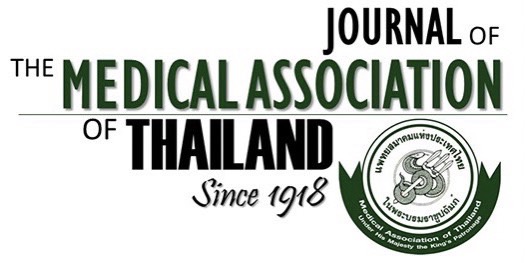Methylprednisolone Treatment in Children with Nephrotic Primary Focal Segmental Glomerulosclerosis
Sauwalak Opastirakul MD*, Wattana Chartapisak MD*
Affiliation : * Department of Pediatrics, Faculty of Medicine, Chiang Mai University, Chiang Mai
Objective : To examine the effectiveness of pulse methylprednisolone in children with nephrotic primary focal
segmental glomerulosclerosis.
Materials and Methods : Medical records of children, who were treated with a pulse methylprednisolone regi-
men for nephrotic syndrome resulting from primary focal segmental glomerulosclerosis between 1987 and
2005, were retrospectively reviewed. The age,gender, urine protein, serum creatinine, and glomerular filtra-
tion rate at the onset of nephrotic syndrome were recorded. Urine protein, serum creatinine, glomerular
filtration rate, and percentile of height before and after methylprednisolone treatment were compared.
Results : There were six patients (4 male, 2 female) in the present report. The mean age at onset was 9.5 + 2.2
years. Hypertension was noted in four patients and mild renal insufficiency in three. All patients had neph-
rotic-ranged proteinuria at onset and they were initially treated with prednisolone. Two were steroid-depen-
dent and four were steroid-resistant. All of the steroid resistant cases were also resistant to oral cyclophospha-
mide. After methylprednisolone treatment, remission of proteinuria was noted in five patients (83%) (2 com-
plete, 3 partial). Mean duration to remission was 20.8 weeks. There were no significant changes in serum
creatinine (p = 0.43), GFR (p = 0.78) and percentile of height before and after treatment. No hypertension or
cardiac arrhythmia was detected during methylprednisolone administration. The follow-up period after comple-
tion of the methylprednisolone regimen was 19.5 + 15.2 months (range 4-36 months). The clinical course of
five patients with remission was characterized by sustained remission in three patients. Two patients relapsed
at 2 and 8 months after treatment.
Conclusion : Methylprednisolone was effective and safe in treating nephrotic children with primary focal
segmental glomerulosclerosis. There was a high incidence of relapse shortly after the cessation of treatment.
However, a larger number of patients and longer period of follow-up are needed to confirm this conclusion.
Keywords : Nephrotic syndrome, Focal segmental glomerulosclerosis, Steroid resistance, Pulse methylpred- nisolone



